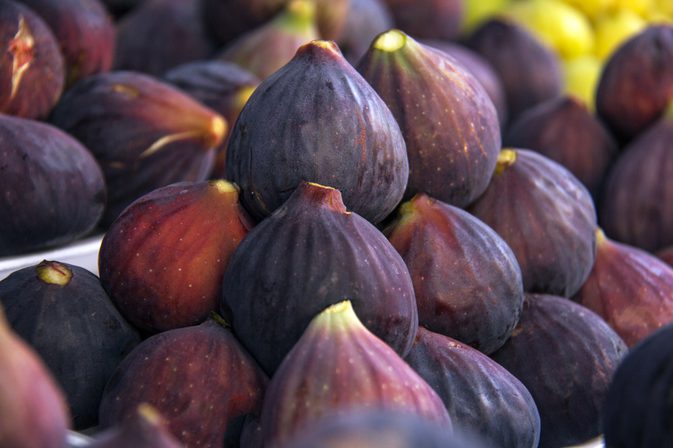Benefit of Fresh Figs
Figs are a bit different from most fruits, although they are members of the mulberry family. These fruits have a chewy texture that isn't juicy like you might expect when you bite into a piece of fruit. Most figs are eaten dried, but you can eat fresh figs, as well. Eaten as far back as Bible times, figs continue to be a nutritious, tasty addition to your healthy eating plan.
The Skinny on Figs
A 100-gram serving of fresh figs, which is about a 1/2 cup, contains 74 calories and less than 1 gram of fat. Figs don't supply much in the way of protein, but they do contain carbohydrates. The carbohydrates in figs, however, are largely because of the fiber and natural sugars they contain, making them a nutritious fruit to include in your diet.
Fantastic Fiber
One of the most impressive nutrients in fresh figs is its fiber. Fiber helps keep your digestive system working efficiently. A fiber-rich diet also helps lower your overall cholesterol levels. Eating a diet rich in fiber is also a smart way to lower your risk of type 2 diabetes, and potentially reduce your chances of getting certain types of cancer. A 1/2-cup serving of fresh figs contains 2.9 grams of fiber. That translates to about 12 percent of the 25 grams of fiber women need each day and about 8 percent of the 38 grams men need daily.
Vitamins and Minerals
A 1/2-cup serving of fresh figs supplies 232 milligrams of potassium. This is about 5 percent of the 4,700 milligrams of potassium adults need to support proper muscle and heart function. The same portion of fresh figs also provides 4.7 micrograms of vitamin K, which is 5 percent of the 90 micrograms women need each day and 4 percent of the 120 micrograms men need on a daily basis. as well, Vitamin K helps your blood clot normally. Figs supply trace amounts of calcium, iron, magnesium, folate and vitamin A, as well.
Choosing and Eating Fresh Figs
Fresh figs wither and perish quickly, so it's important to eat them within a day or two of purchasing them. Fresh figs are in season between June and September, although you might be able to find certain varieties later into the fall, according to Michael T. Murray and Joseph E. Pizzorno, authors of "The Encyclopedia of Healing Foods." Choose plump figs that aren't bruised. Wait to wash the figs until you're ready to eat them. Add chopped, fresh figs to oatmeal or yogurt or scatter them over a tossed green salad. Murray and Pizzorno recommend that you stuff fresh figs with goat cheese and nuts to prepare a tasty appetizer.